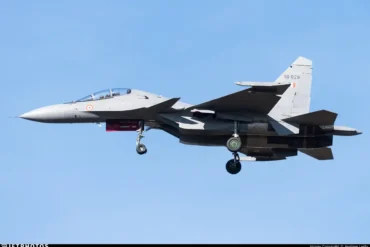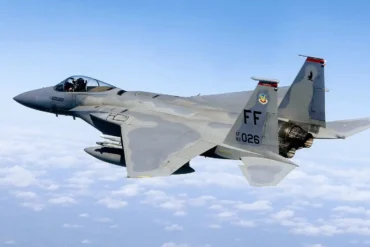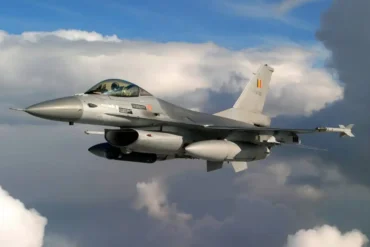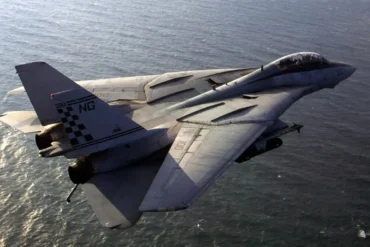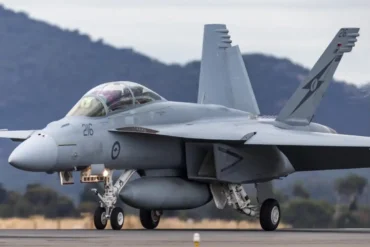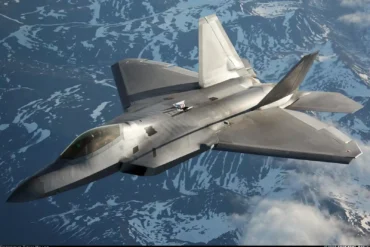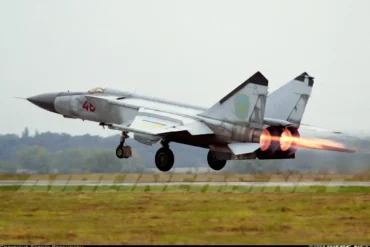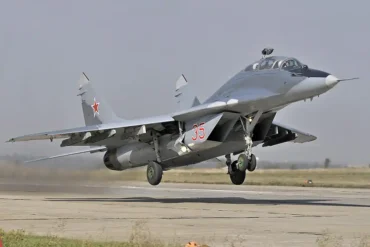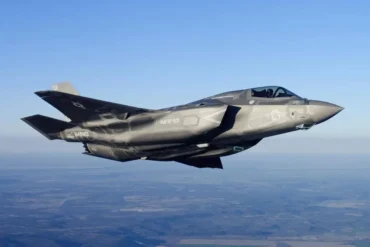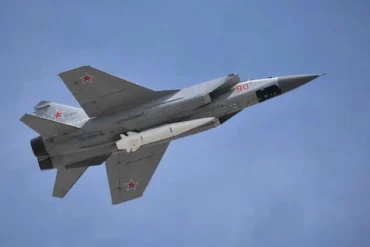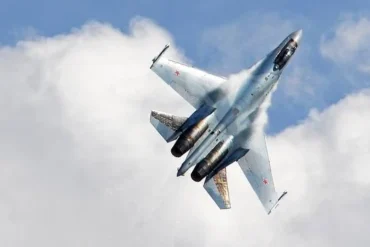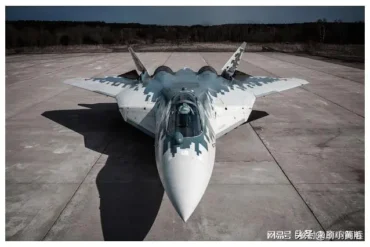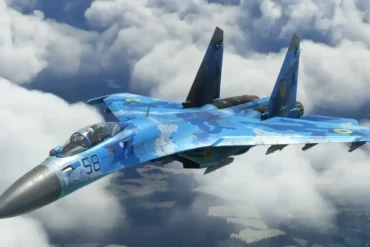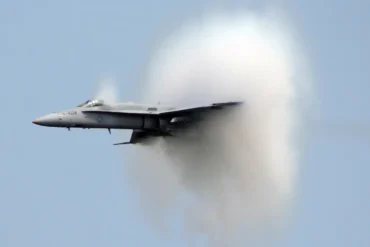The Su-27 Flanker, a versatile and formidable jet, is a marvel of Soviet engineering. Developed during the Cold War, it remains one of the most iconic and influential fighter aircraft in the world. Known for its extraordinary agility and advanced technology, the Su-27 continues to leave a lasting impact on modern air combat. From breathtaking maneuvers to a global presence, let’s dive deep into the world of the Su-27, highlighting its remarkable features and fascinating history.
The Legendary “Pugachev’s Cobra” Maneuver
One of the most awe-inspiring features of the Su-27 is its ability to perform Pugachev’s Cobra, a maneuver that first stunned the world during the 1989 Paris Air Show. Demonstrated by Soviet test pilot Viktor Pugachev, this move involved rapidly pitching the aircraft’s nose up to 120 degrees while maintaining level flight. The maneuver showcased the Su-27’s extraordinary aerodynamic instability and the pilot’s precise control at high angles of attack.
The Cobra maneuver, while incredibly dramatic, is not just for show—it’s a testament to the aircraft’s superior control systems and thrust-vectoring capabilities. This ability to perform extreme maneuvers gives the Su-27 an edge in close-quarters dogfighting, making it a deadly adversary in air-to-air combat. The Cobra remains one of the most iconic symbols of Soviet-era aviation prowess and a key reason why the Su-27 remains an admired aircraft to this day.
Designed for Air Superiority: The Su-27’s Performance
The Su-27 was primarily designed to counter the U.S. F-15 Eagle, an advanced air superiority fighter. However, the Su-27 exceeded expectations with its exceptional speed, agility, and combat range. With a maximum speed of 2,500 km/h (Mach 2.35) and a service ceiling of 62,500 feet, the Su-27 is built for long-range interceptions and high-speed combat.
Equipped with twin Saturn AL-31F engines, the Su-27 delivers an impressive thrust-to-weight ratio, enabling it to reach a climb rate of 59,000 feet per minute—one of the highest in its class. This incredible thrust allows the jet to engage enemy aircraft from a distance, intercept bombers, and conduct rapid strikes with unparalleled speed.
In addition to raw power, the Su-27 boasts a highly advanced avionics suite that supports both long-range radar and close combat. These capabilities make the Su-27 an essential air superiority asset, capable of dominating the skies.
Record-Breaking Missile Kill: Beyond Visual Range Combat
Despite being a product of the 1980s, the Su-27 family remains relevant in modern combat scenarios. One notable incident in 2025 during the Russia-Ukraine conflict highlighted the Su-27’s legacy. A Russian Su-30SM engaged a Ukrainian Su-27S at a staggering range of 130 km using an R-37M missile—one of the longest missile shots in modern air combat history. This demonstrated the continued effectiveness of the Su-27 family in beyond-visual-range combat despite having older radar systems on some variants.
While newer aircraft like the Su-35 and Su-57 have further refined the Su-27’s design, this record-breaking kill underscored the enduring relevance of the Su-27’s radar and missile systems in modern warfare.
Thrust Vectoring: Paving the Way for Future Aircraft
The Su-27’s experimental Su-37 variant introduced 2D thrust-vectoring engines, a feature that allowed it to perform maneuvers such as 360-degree flat spins and post-stall recovery. These revolutionary advancements in thrust vectoring technology laid the groundwork for later aircraft, like the Su-35 and Su-30MKI, which continue to utilize this technology.
Though the Su-37 prototype tragically crashed in 2002 due to structural stress, its innovations were not in vain. The Su-35, known as the “Flanker-E,” and the Su-30MKI have benefited greatly from this thrust vectoring technology, which allows for unprecedented agility and close combat superiority. The Su-37’s legacy lives on in these modern fighters, ensuring the Flanker family remains at the forefront of aerial warfare.
NATO Codename: The Flanker
NATO assigned the Su-27 the codename “Flanker”, a fitting name that refers to the aircraft’s primary role of flanking enemy positions. As one of the most agile and advanced jets of its time, the Flanker was intended to outmaneuver adversaries and engage them from unexpected angles. The term “Flanker” became synonymous with Soviet aviation, and even as newer variants like the Su-35 and Su-37 emerged, the original name stuck.
The Su-35 is often referred to as the “Flanker-E”, while the Su-37 is called the “Flanker-F” in recognition of the series’ legacy. The continued use of the Flanker designation highlights the timelessness of the Su-27’s design and the profound influence it has had on subsequent aircraft.
Heavyweight Champion: The Su-27’s Versatility
Weighing in at a maximum takeoff weight of 33,000 kg, the Su-27 is considered a heavyweight among fighter jets. Despite its mass, the aircraft’s blended wing-body design and fly-by-wire system enable it to remain incredibly agile and maneuverable in combat. The fly-by-wire system ensures stability and precision even under extreme conditions, while its powerful engines allow for lightning-fast responses in battle.
In terms of armament, the Su-27 is a formidable platform. It can carry up to 12 air-to-air missiles, including the R-73 Archer and R-27 Alamo variants, plus a 30mm GSh-30-1 cannon for close-range combat. This versatility allows the Su-27 to perform a wide range of missions, from air superiority to strike missions and even interceptions.
F-16 Rivalry: Agility in Close Combat
The Su-27 has long been compared to the F-16 Fighting Falcon, another iconic fighter jet. While the F-16 boasts superior roll rates and a higher 9G tolerance, the Su-27 excels in low-speed maneuverability. The Cobra maneuver alone gives the Su-27 an edge in close combat situations, where agility is paramount.
Pilots of both aircraft often debate which is the superior fighter, but it’s clear that the Su-27’s unique capabilities, like its thrust vectoring and low-speed performance, give it advantages in certain scenarios. Though modern combat rarely relies on such dramatic maneuvers, the Su-27 remains a favorite for its performance in dogfights and close-range engagements.
“Timeless” Evolution: The Su-27’s Upgrade Potential
One of the most remarkable features of the Su-27 is its inherent design philosophy that allowed for significant upgrades over the years. The original design of the Su-27 left a 20% margin for future modifications, ensuring that the aircraft could evolve with new technologies and combat requirements. This foresight has given rise to a family of highly capable aircraft, including the Su-30 multirole fighter, the Su-33 carrier-based aircraft, and the Su-35, often referred to as the “ultimate Flanker.”
These variants have vastly expanded the Su-27’s role from a dedicated air superiority fighter to a highly versatile platform capable of performing ground attack, reconnaissance, and carrier operations. China has also taken inspiration from the Su-27, developing the J-11, J-15, and J-16 series, which further exemplify the Su-27’s global influence.
This “family tree” of aircraft showcases the Su-27’s ability to adapt to the evolving needs of air forces across the world. Its ability to transform and remain relevant, even as newer technologies emerge, speaks to the timelessness of its core design.
Cold War’s Most Expensive “Art of Behavior”: The Su-27’s Bold Statement
During the Cold War, the Soviet Union often used the Su-27 as a tool of psychological warfare as much as a combat aircraft. The Su-27, with its $30 million price tag (in 1980s USD), was not just a piece of military hardware—it was a statement of Soviet air superiority.
One of the most famous and daring acts occurred when the Soviet Union used the Su-27 to fly dangerously low over an American aircraft carrier. This low-level flyover, combined with fuel-dumping over the carrier’s deck, was a deliberate act of provocation meant to demonstrate the Su-27’s ability to approach the enemy undetected and strike with precision. It wasn’t just an offensive maneuver but also a symbolic act to assert Soviet dominance over the seas.
This bold move became a symbol of the Soviet Union’s military strength and was part of the larger “aircraft as political statement” approach that characterized the Cold War era. The Su-27 wasn’t just a combat aircraft; it was a flying demonstration of power and technological prowess, further solidifying its place in history.
Global “Flanker” Imitations: The Su-27’s International Influence
With over 800 Su-27 family aircraft in service worldwide, the aircraft has become a global symbol of air superiority. Its unique design and incredible agility have inspired numerous countries to adopt or modify variants of the Flanker for their own military needs.
Indonesia, for instance, has re-painted its Su-27s in a unique “panda” livery, making their aircraft stand out in the global fleet. China, which originally licensed the Su-27 as the J-11, still maintains the classic blue-and-white camouflage that made the Su-27 famous. Meanwhile, Russia’s latest Su-35S aircraft pays homage to the original design with a striking digital pixel camouflage pattern, a modern twist on the traditional colors.
These customizations reflect the Su-27’s lasting legacy as a military workhorse that has been adapted and celebrated by numerous air forces worldwide. Whether through cosmetic changes or advanced technological upgrades, the Su-27 continues to shape the landscape of global air power, further cementing its place as one of the most influential aircraft designs in aviation history.
The Su-27 as an “Airborne Refueling Station” in the Arctic Circle
The Su-27’s fuel capacity not only supports long-range missions but also enhances its role as a strategic asset for extended operations. With its internal fuel capacity of 9.4 tons, which is equivalent to the combined fuel capacity of three family sedans, the Su-27 has been known to perform incredible feats of endurance.
For instance, the Su-27 set a remarkable record by flying non-stop from Moscow to the Russian Far East for a 15-hour flight, without needing to refuel. The aircraft’s range, when combined with external fuel tanks, can extend up to 3,680 km, making it a true long-range asset. This kind of endurance makes the Su-27 invaluable in scenarios that require extended patrolling or deep reconnaissance missions, particularly in remote areas like the Arctic Circle, where its ability to remain airborne for long durations provides unmatched strategic advantage.
This extended range also gives the Su-27 the ability to serve as a platform for refueling other aircraft during long-range missions, further emphasizing its capability as a critical component of aerial operations.
The Su-27 in Digital Combat Simulators
The Su-27’s reputation has transcended real-world combat, becoming a star in digital combat simulators. In DCS: Flaming Cliffs 2024, players can experience the realistic flight dynamics of the Su-27, enjoying an accurate representation of its controls, weapon systems, and flight characteristics. For long-time fans of the aircraft, owning an older version of the simulator (like FC3) allows players to experience the same model without needing to repurchase it.
This digital presence has introduced the Su-27 to a new generation of enthusiasts, ensuring its legacy continues to inspire aviation fans and aspiring pilots alike.
Conclusion: The Timeless Legacy of the Su-27 Flanker
The Su-27 Flanker stands as a testament to the innovation, skill, and foresight of Soviet engineers. From the Pugachev’s Cobra to breathtaking air combat capabilities, the Su-27 has remained relevant for decades. Its global influence, unmatched agility, and adaptability in both real-world combat and digital simulations ensure that it will continue to be a cornerstone of aviation history.
Whether as a symbol of Soviet-era military might or as a cornerstone of modern air forces worldwide, the Su-27 will remain a cornerstone of aviation technology and tactics for years to come.

